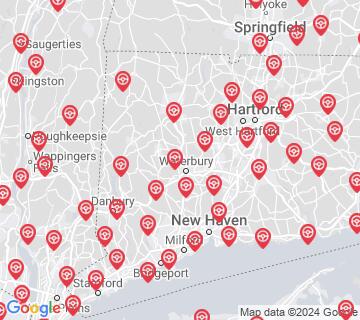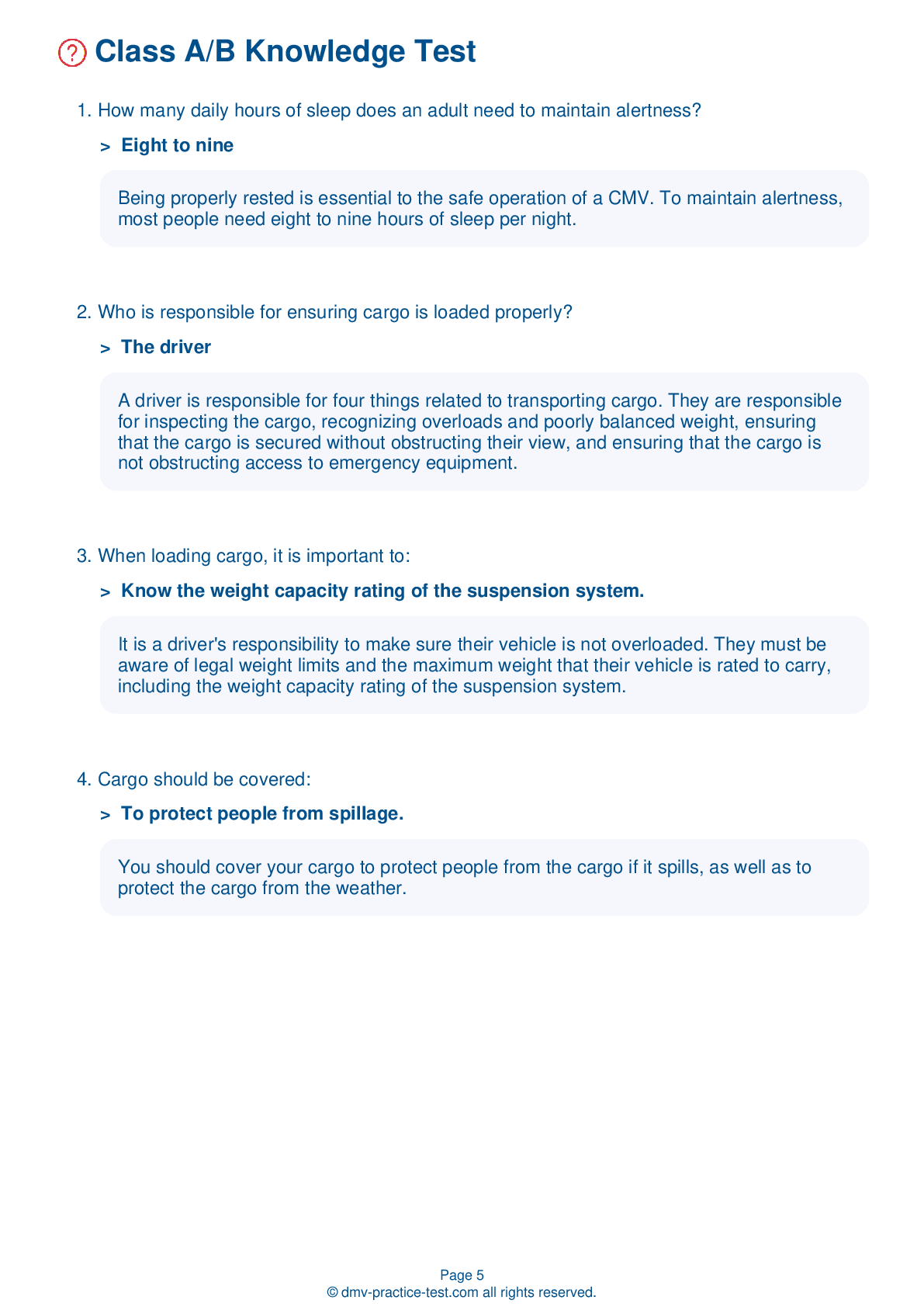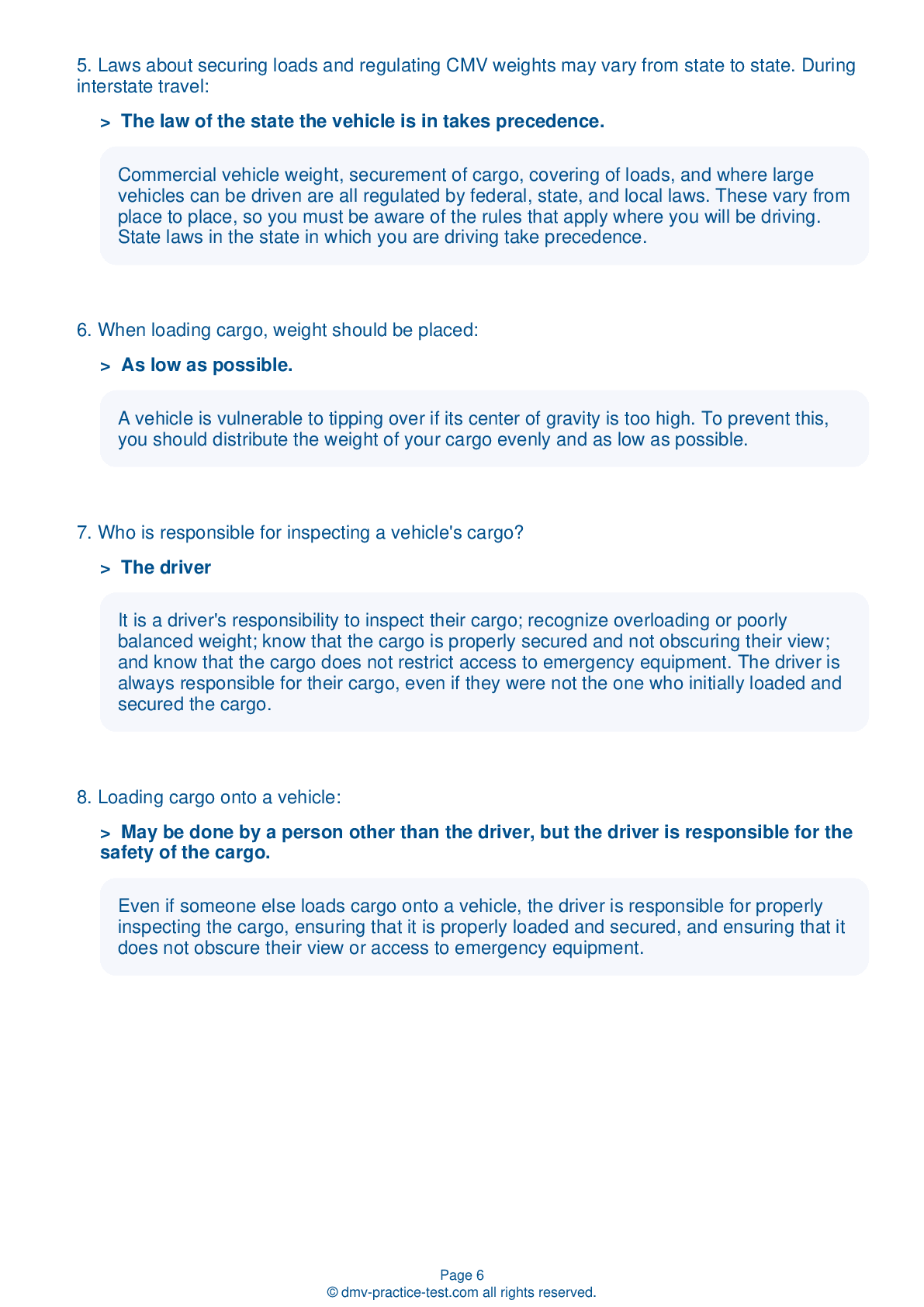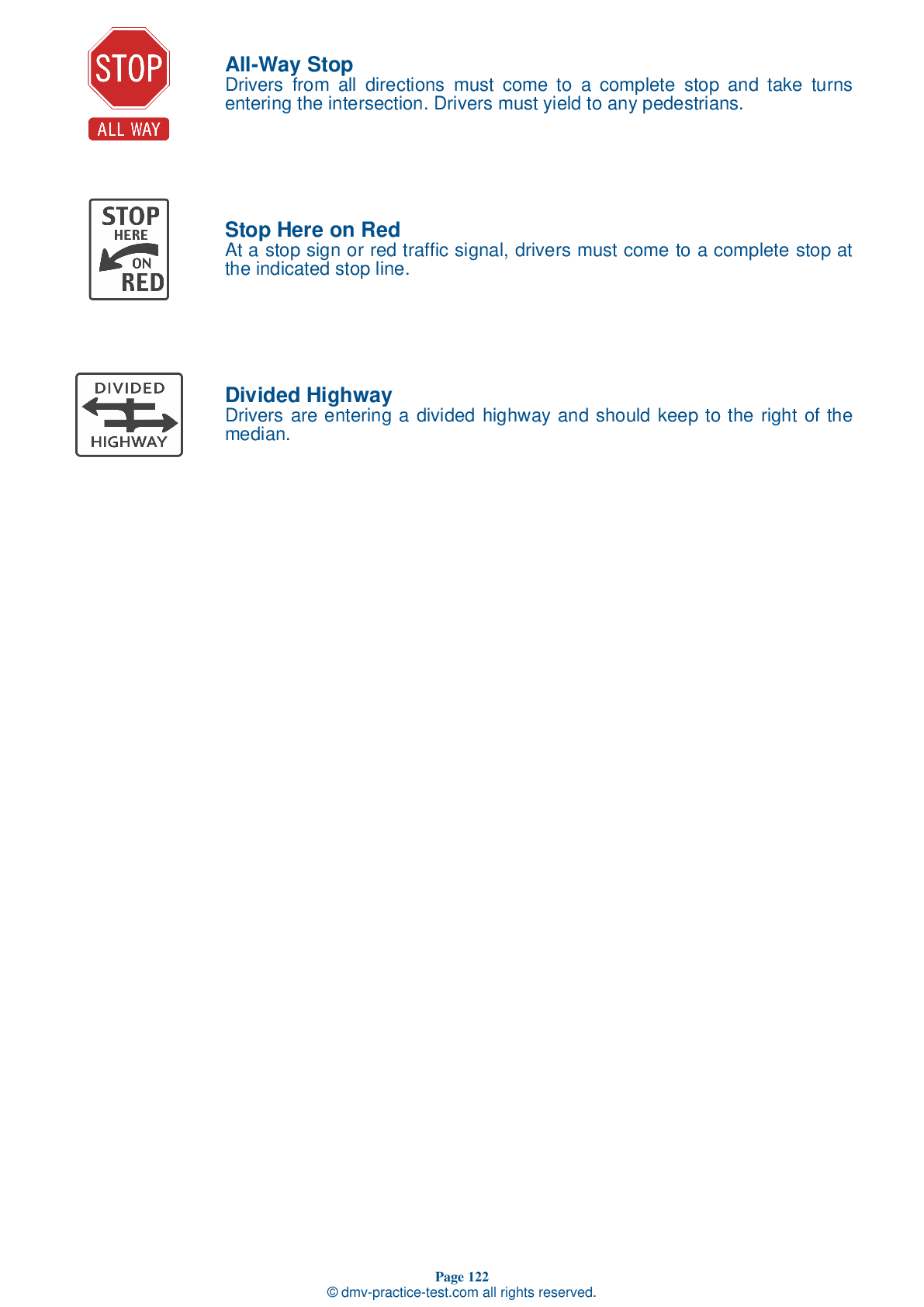Tank #2
Tank Endorsement Test | Connecticut 2025 #2 Page 3 of 3
Train for FREE with our Connecticut tank endorsement practice test online. The official exam test consists of several obligatory parts, with all of them checking your knowledge of different blocks of road rules. If you need to obtain a CT tank license in 2025, practice as much as possible. Free sample tests published on our website will help you check and improve your knowledge and boost your grades. Please bear in mind that DMV requirements for issuing a CDL tank vehicle endorsement may vary from state to state.
20
16
20
15 . An improperly placarded vehicle can only be moved:
A vehicle that has not been properly placarded may not be driven, except when necessary to protect life or property in an emergency.
16 . Who is responsible for identifying the hazard class of a hazardous material?
Everyone
The shipper of hazardous materials is responsible for using the hazardous materials regulations to determine the product's identification number, proper shipping name, hazard class, and packing group. They are also responsible for determining the correct packaging, labels, markings, and placards to use.
17 . When entering a foggy area, you should:
Use your high beam headlights.
Always slow down before entering a foggy area. Use low beam headlights, avoid passing others, and avoid stopping on the side of the roadway. It is safest to completely avoid driving under foggy conditions, if possible.
18 . If a substance is transported in a reportable quantity, which letters must appear on the shipping paper and package?
NT
When hazardous materials are being transported in a reportable quantity in one package, the shipper must display the letters "RQ" on the shipping paper and package.
19 . If your vehicle is hydroplaning, you should:
If your vehicle begins to hydroplane, do not apply the brakes. Instead, slow down by releasing the accelerator and pushing in the clutch. This will help you to regain traction.
20 . After a trip:
A vehicle's battery should be disconnected.
After a trip, you may be required to perform an inspection and file a report on each vehicle that you've driven.
Search the best driving school in your neighbourhood
2025 Connecticut | Frequently Asked Questions
A CDL Class B license in Connecticut allows you to operate single vehicles with a gross vehicle weight rating (GVWR) of 26,001 pounds or more, or any such vehicle towing a vehicle not exceeding 10,000 pounds GVWR. It includes vehicles like straight trucks, large buses, segmented buses, and trucks towing smaller vehicles.
A Class B CDL license in Connecticut enables the holder to operate single vehicles with a gross vehicle weight rating (GVWR) of 26,001 pounds or more, or tow a vehicle not exceeding 10,000 pounds GVWR. This includes straight trucks, large passenger buses, segmented buses, dump trucks with small trailers, and trucks towing smaller vehicles.
To acquire a Class B CDL license in Connecticut, you must be at least 21 years old (18-20 for intrastate driving), possess a valid Connecticut driver's license, pass a vision test, and successfully complete a knowledge test. After that, you must obtain a Commercial Learner's Permit (CLP), hold it for 14 days minimum, and pass a skills test.
In Connecticut, you must be at least 21 years old to qualify for a Class B CDL license for interstate transport. However, if you plan to drive only within the state (intrastate transport), you can qualify at 18 years old. It's important to note that additional requirements must also be met.
Specific endorsements are not necessary for a Class B CDL license, but they can expand your job opportunities. Endorsements certify additional skills like operating a school bus (S), passenger vehicle (P), or tank vehicle (N). You can also get an H endorsement for transporting hazardous materials. Each endorsement requires passing an additional knowledge test.
The Class B CDL skills assessment in Connecticut includes three parts: a pre-trip vehicle inspection test, a basic vehicle control test, and an on-road driving test. These tests assess your ability to inspect your vehicle, control the vehicle in various situations such as backing and turning, and safely operate the vehicle in traffic.
Yes, Class B CDL license holders in Connecticut are restricted to driving single vehicles with a gross vehicle weight rating (GVWR) of 26,001 or more pounds, or a towed vehicle not exceeding 10,000 pounds GVWR. They cannot drive a combination of vehicles (like a tractor-trailer) unless they have a Class A CDL. Additionally, they must comply with federal hours-of-service regulations.
Yes, the written Class B CDL test in Connecticut can be taken in languages other than English. The Connecticut Department of Motor Vehicles provides the test in several languages. However, federal regulations require that all CDL holders must be able to read and speak English sufficiently to converse with the general public, understand highway traffic signs and signals, respond to official inquiries, and make entries on reports and records.
Yes, you can request accommodations for the Class B CDL written exam in Connecticut if you have a disability. The Connecticut Department of Motor Vehicles complies with the Americans with Disabilities Act (ADA) and provides reasonable accommodations like extra time, a separate testing room, or use of special equipment. Be sure to make your request well in advance of your scheduled test date.
Yes, if you fail the Class B CDL written test in Connecticut, you can retake it. However, you must wait at least 7 days before retesting. There's also a retest fee that you'll need to pay each time you retake the test. It's recommended to study the manual thoroughly before retaking the test to increase your chances of passing.




